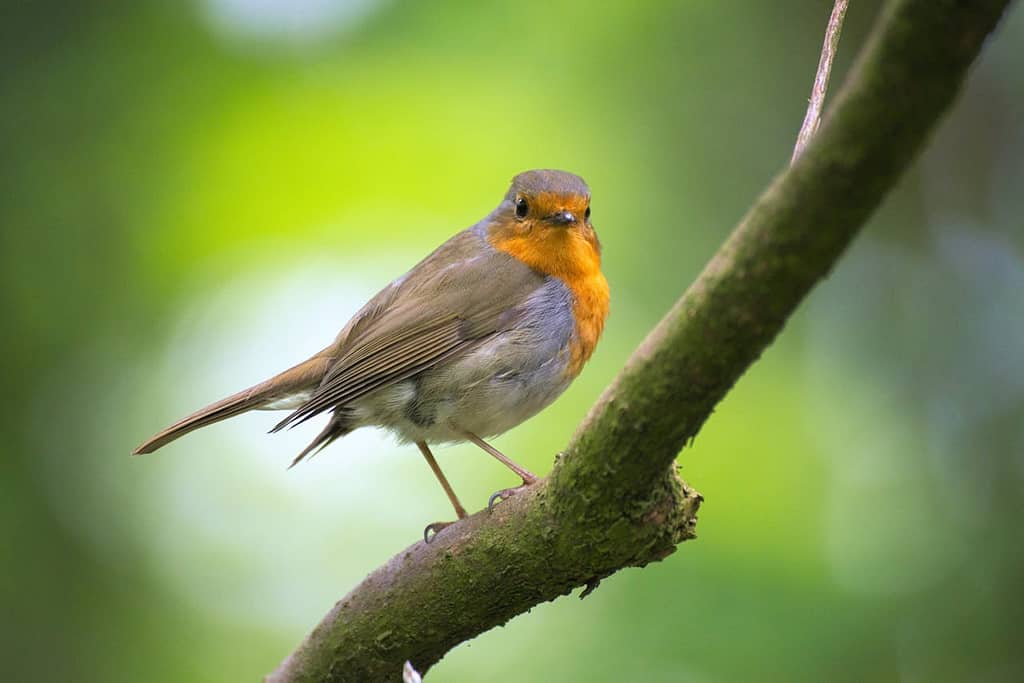Birds are among the most intriguing creatures on the planet, known for their ability to soar through the skies and their diverse range of species. However, there is frequently confusion about how birds are classified. A commonly asked question is, “Are birds mammals?” Despite some similarities, birds and mammals belong to separate groups with distinct characteristics. This article will explain why birds are not classified as mammals and the main differences between these two fascinating animal groups.
Characteristics of Mammals
To understand why birds are not mammal, let’s first look at what defines a mammal. Mammals are a diverse group of animals, but they all share some fundamental characteristics:
- Warm-Blooded (Endothermy): Mammals can regulate their body temperature internally, allowing them to maintain a consistent temperature regardless of the external environment.
- Live Births: Most mammals give birth to live young rather than laying eggs. This allows for the extended development of the offspring within the mother’s body.
- Milk Production: Female mammals have mammary glands that produce milk to nourish their young. This is crucial for the early development and growth of the offspring.
- Hair or Fur: All mammals have some form of hair or fur at some stage in their lives. This feature helps with insulation and protection.
- Lungs for Breathing: Mammals breathe air through lungs, which is a key aspect of their respiratory system.
Examples of typical mammals include humans, dogs, cats, and elephants. These characteristics are consistent across the wide variety of mammal species.
Learn about: Why whales are considered mammals and not fish.
Why Are Whales Mammals Not Fish?
Characteristics of Birds
Birds, on the other hand, are defined by a different set of characteristics that distinguish them from mammals:
- Feathers: Birds are the only animals with feathers. Feathers provide insulation, enable flight, and play a role in mating displays and camouflage.
- Beaks: Birds have beaks instead of teeth. The shape and size of a bird’s beak are adapted to its diet and lifestyle.
- Egg-Laying: Birds reproduce by laying eggs. The eggs have hard shells that protect the developing embryo until it hatches.
- Lightweight Skeletons: Birds have lightweight, hollow bones that aid in flight. This unique skeletal structure is a key adaptation for their aerial lifestyle.
- Air Sacs: In addition to lungs, birds have air sacs that allow for a highly efficient respiratory system, crucial for sustaining flight.
Examples of typical birds include sparrows, eagles, penguins, and ostriches. These features are consistent across the wide variety of bird species.
Why Birds Are Not Classified as Mammals
Despite some surface-level similarities, birds and mammals are fundamentally different in several key ways.
Physical Characteristics
- Feathers vs. Hair/Fur: Birds have feathers, while mammals have hair or fur. Feathers are unique to birds and are essential for flight and insulation.
- Beaks vs. Teeth: Birds have beaks, whereas mammals have teeth. This difference in mouth structure reflects their distinct evolutionary paths and dietary needs.
- Egg-Laying vs. Live Births: Birds lay eggs with hard shells, whereas most mammals give birth to live young. This reproductive difference is a significant distinction between the two classes.
Anatomical Differences
- Respiratory System: Birds have a highly efficient respiratory system that includes air sacs, enabling continuous airflow through the lungs. Mammals, on the other hand, rely solely on lungs for breathing.
- Bone Structure: Birds have lightweight, hollow bones that are adapted for flight. Mammals have denser bones that provide support for various modes of locomotion.
Evolutionary Evidence
Birds and mammals evolved from distinct ancestral lineages. Birds are descended from theropod dinosaurs, a group of bipedal reptiles. Over millions of years, these dinosaurs evolved feathers and other adaptations that eventually led to the birds we know today. Mammals evolved from synapsid reptiles, a distinct evolutionary branch. This distinct evolutionary history is reflected in their physical and anatomical differences.

Common Misconceptions and Clarifications
Similarities Between Birds and Mammals
There are a few similarities between birds and mammals that can cause confusion. For instance, both birds and mammals are warm-blooded, meaning they can regulate their body temperature. Additionally, some birds and mammals share similar habitats and behaviors.
Differences That Matter
- Reproduction: Birds lay eggs, whereas mammals give birth to live young. This fundamental difference in reproduction is a clear distinction between the two classes.
- Body Covering: Birds have feathers, while mammals have hair or fur. This difference is crucial for their respective lifestyles and adaptations.
- Respiratory System: Birds have a unique respiratory system that includes air sacs, allowing for a continuous flow of air through their lungs. Mammals rely on a diaphragm and lungs for breathing.
Conclusion
Birds are fascinating creatures, with their own set of characteristics that set them apart from mammal. While both groups have some similarities, such as being warm-blooded, they differ significantly. Birds have feathers, lay eggs, and use a specialized respiratory system, whereas mammals have hair or fur, give birth to live young, and breathe only through their lungs. Recognizing these distinctions is critical for gaining a better understanding of the diversity of life on our planet. Birds and mammals each play a distinct role in the animal kingdom, adding to the rich tapestry of life that makes our world so special.
References
- National Geographic – Birds
- Smithsonian National Museum of Natural History – What is a Mammal?
- Britannica – Bird





